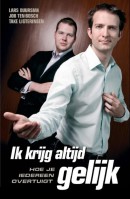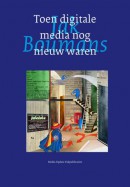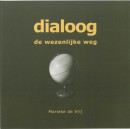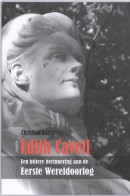Product informatie
- ISBN 9789051790832
- ISBN 10 905179083X
- Druk 1
- Bindwijze Paperback
- Taal Engels
- Uitgever Gopher B.V.
- Onderwerp Geschiedenis algemeen
- Beschikbaar sinds 5 Mei 2006
Samenvatting
The dualism of the christian and muslim worlds during the middle ages The general subject of this volume is the relationship of the Christian and Islamic worlds. Throughout the Middle Ages this relationship was invariably hostile, so that it may be called dualistic. In short, both sides would have the other out of the way. Chapter I treats The Muslim world from 732 to 1526. When the period of the great Arab conquests ended in 732, the old Christian heartlands, Syria, Palestine and Egypt had fallen into Arab hands, together with North Africa and the Iberian peninsula (with the exception of Asturias and the Basque country). Yet Asia Minor was still Byzantine and Christian. There was still one important Arab conquest after 732, namely, the island of Sicily, conquered in long and hard fights on ... the Byzantines between 832 and 965. It remained in Arab possession for seventy-three years. The Arab conquests evoked in the West the idea of reconquest, the Reconquista. A first realization of this was Charlemagne's conquest of the north-east of Spain around 800, the so-called Spanish Mark, the region between the Pyrenees and the Ebro. The Muslim world was ideally an umma, a religious and political unity, with all Muslim faithful under the rule of the caliph, the successor of the Prophet. This ideal was never realized. Already under the first caliphs there were revolts and civil wars. In 660 Mu'awiyah, founder of the Umayyah dynasty, was recognized as the caliph of all Islam. However, he was not a descendant of Mohammed, which was considered a decisive disadvantage. This led to the still existing split of the Sunnites and the Shi'ites. The Shi'a did not recognize the Umayyahs, but acknowledged 'Ali, the Prophet's son-in-law, as the lawful successor. When the Umayyah dynasty died out, it was succeeded by the Abbasids (750-1250). Since Egypt, North Africa and Spain did not recognize it, this was the definitive end of the umma. Later there was not even one caliph; in Spain there were several caliphates. A new period of conquest began with the advent of the Seljuq Turks, around 1063, later succeeded by the Ottoman Turks around 1290. The Seljuqs conquered Asia Minor on the Byzantines; the Ottomans were the ones who conquered the Balkans. They appeared there in 1354, subjected all the Balkan nations, and took Constanntinople in 1453. Their last conquest in Europe was the greater part of Hungary in 1526. Chapter II treats Deviant Tendencies in Islam. Orthodox Muslims are the Sunnites; all others are considered as deviants by them. There are the Sufis, members of a mystical Islamic sect, of whom the 'dancing dervishes' are the best-known element. Ten to fifteen percent of the total Muslim population is formed by the Shi'ites. They do not have caliphs, but Imams (not to be confused with imans, the ordinary prayer leaders). There have been eleven Imams, the last one disappearing in 867. The Twelfth Imam is the Hidden Imam, who still lives and who will return shortly before the last Judgment. Two other deviant sects are treated, the Yazidis and the Nizariyya, to whom the ill-famed Assassins belonged. This chapter is concluded with a disquisition on The survival of the Gnosis in an Islamic context. Chapter III has as its subject How the West viewed Islam. This is a long story, illustrated with texts and examples, of misunderstandings and of very few more accurate notions. The gist of the matter is that the Christians, who had thought that their religion was the only true one and would be there for all times, could neither understand nor digest why there so suddenly had originated a new religion with exactly the same claims. With Chapter IV the story of The Christian counteroffensive begins, Part I The Reconquest of Sicily, Part II The Reconquista of Spain. The reconquest of Sicily was the work of the Normans coming from South Italy, which they had conquered on the Byzantines. It was a relatively short affair in the last decades of the eleventh century. The Reconquista of Spain, to the contrary, lasted almost seven centuries, from the first Carolingian invasion about 800 to the capture of Granada in 1492. It is a story of slow progress and Arab counteroffensives. In the course of the wars several Spanish kingdoms originated, Leon, Aragon, Castile, later also a kingdom in liberated Portugal. There was not a united Spanish realm. Chapter V presents The Crusades: The First Century, 1096-1187. It opens with a disquisition on the question of Was crusading justified?, a question which is answered in the negative by the author. Then comes something on the Holy War ideology. The Crusades were not meant to conquer the Muslim lands but to liberate the Holy Places in Jerusalem and Bethlehem; principally they were not armed campaigns but pilgrimages. It is described how Pope Urban II preached the First Crusade in Clermont-Ferrand in 1096. There were in fact two Crusades: the Popular Crusade of Peter the Hermit, which ended in a catastrophe, and the Seigneurial Crusade, described in much detail, with the siege and capture of Antioch in 1097 and that of Jerusalem in 1099. A Kingdom of Jerusalem and other Crusader states were erected on the soil of Syria and Palestine. The Second Crusade of 1147 did not become a great success. Then there is a long dscription of the precarious position of the Crusader states, constantly harassed by the Muslims, until Saladin, the sultan of Egypt, succeeded in disastrously defeating the Christians and reconquering Jerusalem in 1187. Chapter VI continues the story with The Crusades: The Second Century, 1187-1291. The loss of Jerusalem caused the Third Crusade in the course of which the Emperor Frederick I Barbarossa lost his life. The Crusade reached Palestine indeed, but did not recapture Jerusalem. The sad story of the Childrens' Crusade of 1212 is related. The Fifth Crusade was directed against Egypt, because it was the base from which Jerusalem was held. There was a landing on the Egyptian coast in 1218 and a long siege of Damietta, which was captured and lost again. Next comes the curious story of the Emperor Frederick II's solo crusade, single-handed and unarmed. He succeeded in 1229 in concluding a treaty with the Egyptian sultan al-Kamil, who ceded Jerusalem and Bethlehem to the Christians. These cities were reconquered by the Muslims in 1244. The results of the Sixth Crusade, in 1234, were not impressive. The Seventh Crusade under the leadership of the French King Louis IX became a dismal failure. Once again directed against Egypt in 1248, it captured Damietta, but then everything went wrong. King Louis was even taken prisoner; Egypt had to be evacuated. This was virtually the end of the crusading period. The Muslims made ever more encroaches on the Christian states. Antioch was lost. When they captured Acre in 1291, it was all over. Chapter VII presents an Assessment of the whole undertaking. This volume contains a Manual, with the subjects treated in the previous seventeen volumes, eight maps, three chronological tables, four lists of the rulers of the Crusader States, a Bibliography, and a General Index. For more information about 'The Light and the Dark'- series go to Fontaine's own website: http://home.wanadoo.nl/piet.fontaine
Meer boeken van uitgever Gopher B.V.
Meer boeken met de onderwerpen Geschiedenis algemeen
Veel gestelde vragenmeer antwoorden
Hoe werkt Resale.nl?
Je kunt op de website advertentie(s) plaatsen van de boeken die u wilt verkopen. Een potentiële koper neemt dan contact met je op om samen een prijs af te spreken en de transactie verder af te handelen. Houdt hierbij onze aanbevelingen voor een veilige transactie in gedachten en voorkomt dat je slachtoffer wordt van oplichting.
Hoe kom ik in contact met de verkoper?
Je kunt een reactie versturen door bij de betreffende advertentie van de verkoper op de knop ‘doe een bod’ te drukken. Je kunt nu een bod doen op de advertentie en een persoonlijk bericht toevoegen. Het verstuurde bod brengt je in contact met de verkoper via e-mail.
Wat zijn de kosten voor het verkopen van mijn studieboeken?
Je kunt geheel gratis gebruik maken van de diensten van Resale.nl. Resale.nl haalt zijn inkomsten uit advertenties.
Hoe kan ik een boek kopen?
Resale.nl werkt globaal op de volgende manier:
- Zoek via het zoekveld het studieboek dat je wilt kopen.
- Uit de zoekresultaten kies je het studieboek waar je geïnteresseerd in bent.
- Op de detailpagina van het studieboek kun je een overzicht vinden van de personen die het studieboek verkopen.
- Je kunt nu een bod plaatsen door op de button te klikken. Het bod wordt via e-mail aan de verkoper verzonden.
- De verkoper van het studieboek neemt contact met je op door een reactie te geven op het bod dat je hebt verzonden. Met de verkoper kun je gezamenlijk een prijs afspreken. Houdt hierbij onze aanbevelingen voor een veilige overdracht in gedachten en voorkom dat u slachtoffer wordt van oplichting.
Hoe weet ik wat ik koop?
Om te achterhalen of wat je koopt ook daadwerkelijk is wat er wordt geadverteerd is het verstandig om bij de verkoper langs te gaan en het aangebodene te bezichtigen. Doe je dit niet, dan loopt je een zeker risico. Onder het kopje ‘Hoe kan ik de kans op misbruik verkleinen’ kun je meer over dit onderwerp vinden.
Kopers over Resale.nl
bart van gijsel
"Ik ben erg tevreden over deze verkoper de familie thus. Goede snelle levering."
Patrice Michel
"De verkoper heeft er alles aan gedaan om het door mij bestelde product zo snel mogelijk naar mij toe te krijgen. Heeft me van iedere stap op de hoogte ..."
marjolein
"Besteeling snel bezorg, in goede staat net zoals beschrijving en goede communicatie met verkoper!"
marjolein
"Goed contact, snel en in goede orde ontvangen. Staat van het boek was zo goed als nieuw!"
hilda1
"goede medewerking en hulp dank u wel"
Tineke
"Het bestelde werd netjes en snel afgeleverd. De prijs was goed."
stacy
"Goed verpaktBoek ziet er mooi uit"
elisa
"Goede levering alleen jammer dat er niet bij was gezet dat er al in geschreven was"
Elly
"Verkoper reageerde snel op mijn emails en heeft ook het boek snel opgestuurd.Het boek was niet van nieuw te onderscheiden. Was waarschijnlijk niet gebruikt. ..."
Gerard+[2]
"Prettig contact gehad en goed zaken kunnen doen."
















